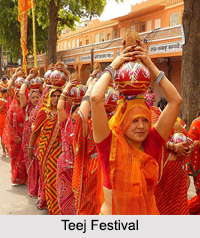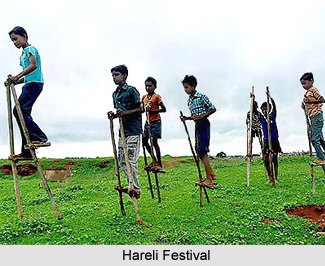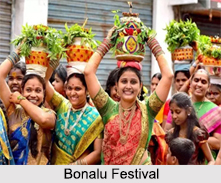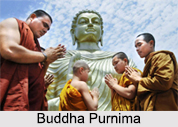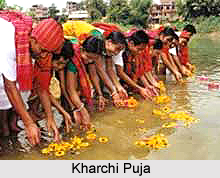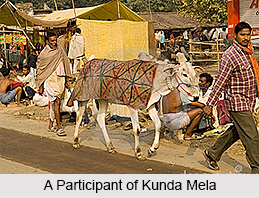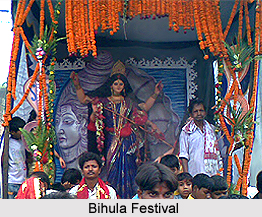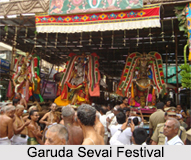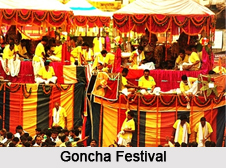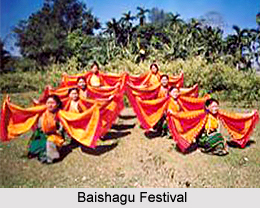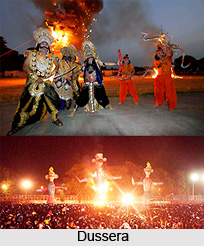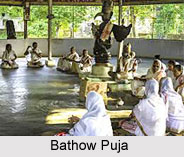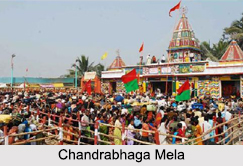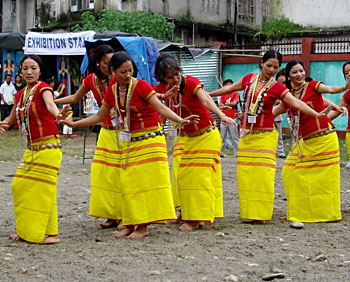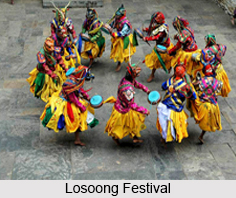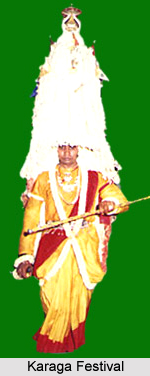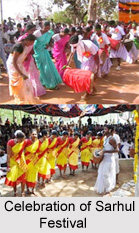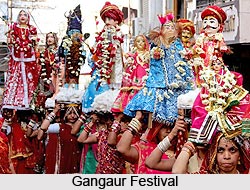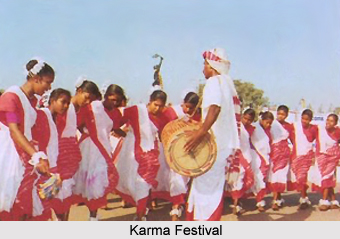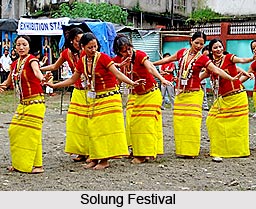 Arunachal Pradesh temple festivals form an essential part of the life of the tribals and are celebrated throughout the year. Most of the festivals of Arunachal Pradesh that are celebrated in temples are associated to agriculture and fêted in a ritualistic manner. The Arunachal Pradesh temple festivals are celebrated as a thanksgiving ceremony to the God for his divine intervention or to pray for a good harvest. Dances form an essential part of the Arunachal Pradesh temple festivals and are performed to express their joy of life.
Arunachal Pradesh temple festivals form an essential part of the life of the tribals and are celebrated throughout the year. Most of the festivals of Arunachal Pradesh that are celebrated in temples are associated to agriculture and fêted in a ritualistic manner. The Arunachal Pradesh temple festivals are celebrated as a thanksgiving ceremony to the God for his divine intervention or to pray for a good harvest. Dances form an essential part of the Arunachal Pradesh temple festivals and are performed to express their joy of life.
Arunachal Pradesh temple festivals are known as the Bangnis. Some of these festivals are celebrated annually in every village on a community basis in the Bangini months of Lakhang and Leehar corresponding to the English month of March and April. The Arunachal Pradesh temple festivals are celebrated for a number of days and the number of days depends on the result of divination performed prior to the fixation of the date of celebration.
The site where the Arunachal Pradesh temple festivals are celebrated is called `Mlkom-Yulo-Nyengeng`. However, these festivals can be held in any sacred premises. On the previous day of the festival, the villagers keep themselves busy in collecting rice beer, rice powder, egg and silk cloth. Sacrificial animals such as mithun, cow, pig, goat and fowl are usually purchased either from their common village fund or by collecting money or paddy from each of the house hold.
Significant Temple Festivals of Arunachal Pradesh
Some of the important festivals are Mopin and Solung of Adis, Sherdukpens and Boori-Boot of the Hill Miris, Losar of Monpas, Dree of Apatanis, Nyokum of Nyishis, Si-doni of Tagins, Reh of Idu Mishmis and so on. Animal sacrifice happens to be a habitual ritual in all kinds of Arunachal Pradesh temple festivals.
Solung Festival
The `Solung` is the main festival of `Adis` and is one of the Arunachal Pradesh temple festivals. This celebration is a manifestation of the Adis festival cult. There are various stories associated to its origin, but the most commonly accepted one is that the Adis were asked by Kine-nane, the Goddesses of wealth and prosperity to perform the Solung Puja.
Nyokum Festival
Nyokum is the festival of the Nyishi tribe and is celebrated for the harmony and prosperity of the people. It is celebrated in East Kemang district, Lower Subansiri district, Kurung Kummey district and Papumpar district. It is a 2-day festival in which the Nyishi tribe enjoys singing, dancing and gathering up. The major rituals are performed by the high priest and prayers are offered to the spirits to bring tranquillity and prosperity.
Losar Festival
It is the festival of the Monpa tribe in Arunachal Pradesh and is celebrated to welcome a new year. Losar Festival lasts for about 8 to 15 days during which homes are cleaned, prayers are offered, religious flags are hoisted atop each house, holy scriptures are read and lamps with butter are lit in all the houses. The local deity is also worshipped by the Monpas for the welfare of the society.
Dree Festival
Celebrated with great zeal and enthusiasm, Dree Festival is a crucial part of the Apatani tribe of Lower Subansiri district. During the festival people offer sacrifice of fowls, eggs and animals to the Gods and pray to the deities of Tamu, Metii, Danyi and Harniang. Prayers are offered to God Tami so that he protects the plants from harmful pests and insects.
Boori Boot Festival
Boori Boot festival is the way to offer gratitude for successful harvest of the crops. Boori Boot means to get together irrespective of caste, creed, age and sex to celebrate the arrival of spring. Another aspect of this festival is that people pray to the spirit of Boori Boot so that it blesses them with prosperity and frees them from diseases. The high priest who is known as Nibu" performs the rituals and conducts the sacrifice on behalf of the people.
Sanken Festival
This is one of the most important religious festivals in Arunachal Pradesh. Sanken or Sangken is a three-day festival in which people bathe the idol of Buddha. The festival also marks the beginning of the New Year.
Some more Arunachal Pradesh temple festivals are Murung; while the festivals of the Nishi tribes are Siron Molo Sochum, Nyokum and Yulo. The Monpa festivals are Jomu and Chosker. The Arunachal Pradesh temple festivals are some of the most enjoyable events in the state, closely following the tribal customs and rituals.
